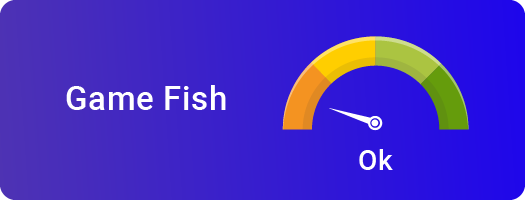Shortnose Sturgeon

Species Details
Acipenser Brevirostrum
Acipenseridae
Acipenseriformes
River, Lake, Inshore
45 - 60 lbs.
48" - 54"
Shortnose Sturgeon (Acipenser brevirostrum) Fish Description
Along with the Atlantic sturgeon, the Shortnose Sturgeon is called the “common sturgeon”. These two fishes are distinguished by noting that the Shortnose Sturgeon has a rounder and shorter head compared to the Atlantic sturgeon.
Shortnose Sturgeons have five rows of scutes or bony plates. This fish has a black head and body that is yellowish-brown. Shortnose Sturgeons have white or yellow bellies; they have a prominent snout pointing forward and with four fleshy, whisker-like projections or barbels.
Diet and Size
Shortnose Sturgeons use their barbels to forage for food in the muddy and sandy bottom areas of rivers. They use their vacuum-like mouths to suck their food. Shortnose Sturgeons typically eat invertebrates like mollusks, crustaceans, mollusks, and insects. They also feast on small benthic fishes, bivalves, polychaetes, and gastropods.
Shortnose Sturgeons measure up to 54 inches and weigh up to 60 pounds. They can live up to 30 years on average; some were reported to have reached almost 70 years old. They develop and mature slowly.
Interesting Facts About the Shortnose Sturgeon
- The Shortnose Sturgeon appears like it is covered in armor.
- Shortnose Sturgeon meat was said to have saved the inhabitants of Jamestown in 1607.
- Records as early as in the 1600s showed that Shortnose Sturgeons were harvested for their meat and roe (eggs) by Native American fishermen.
- Commercially, they are a known source of caviar, oil, and tasty smoked meat. Thus, the Shortnose Sturgeons have been victims of overfishing.
- The oldest remains of the Shortnose Sturgeon date back to over 70-120 million years ago (the Late Cretaceous Period).
- The Shortnose Sturgeon has been considered as an endangered species since 1967; they cannot be illegally fished.
Shortnose Sturgeon — Fishing Techniques
Caution must be noted by anglers when it comes to the Shortnose Sturgeons. This fish species is labeled as Endangered under the Endangered Species Act. They are highly vulnerable especially due to bycatch and other environmental problems like improper sewage disposal. It is no longer allowed to fish Shortnose Sturgeons because of its high possibility to become extinct in the near future.
They used to be captured through catfish pots, shrimp trawls, pound nets, fyke or hoop nets, and even recreational hooks and lines. Shortnose Sturgeons who are caught using a net tend to have a higher mortality rate when the net stays in the water for a long time, or when the waters are warm.
Habitat and Distribution
This species of fish live in the coastal waters and rivers of Canada to Florida. They are also found along the North American East Coast, from Saint John River in Canada, to St. Johns River and the Indian River in Florida. In the South, they swim the rivers of Savannah, Ogeechee, Cooper, Great Pee Dee, Waccamaw, Cooper, Altamaha, Cape Fear, and Edisto. They are also still present in the Hudson, Delaware, Merrimack, Connecticut, and Potomac rivers.
Being an amphidromous kind of fish, they spawn in freshwater rivers; after that, they go downstream and spend a huge part of their lives in the estuaries of the said habitat. Shortnose Sturgeons do not spend a lot of time in the ocean unlike the Atlantic sturgeon.





